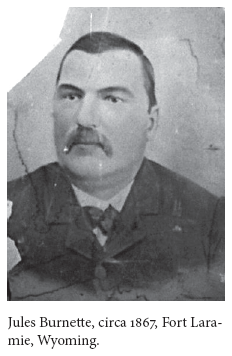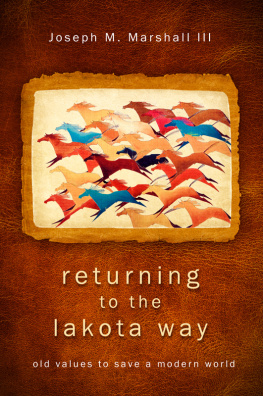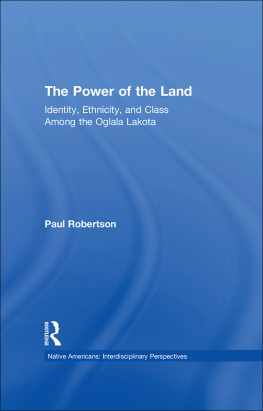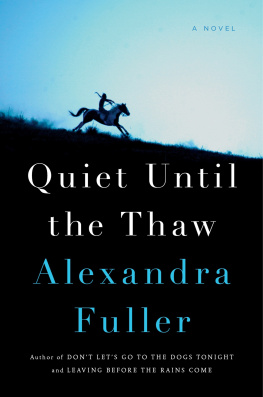One
LAKOTA BEGINNINGS
In order to understand the ups and downs of my life, you need to know a bit about historyAmerican Indian history, which is somewhat different than what you may have learned in school. That history includes the lives of my parents and grandparents. By the time I was born, my tribe, the Brul Sioux people, had barely begun the process of adjusting to living on the reservation. I was part of the third generation of Indians to do so. Our people had to go from living in freedom and independence to a life of restriction and reliance on other people. We are still adjusting.
All of my great-grandmothers were born sometime around 1850. During that time, the Brul Sioux people were well settled into life in what became known as Dakota Territory. Their primary concern was survival. They took care of their families the natural way, hunting and gathering their food and fighting off the enemies who would endanger their lives.
In 1851, the first legal intrusion from the United States government occurred to interfere in their everyday lives. The Fort Laramie Treaty of 1851 sought to reduce the land base the Lakota used for hunting and to impose territorial boundaries upon the tribes who lived and hunted in the area of the Oregon Trail and the prospective transcontinental railway. The United States wanted peaceful tribes so their people could travel safely through Dakota Territory. They asked the Sioux to follow the boundaries set out in the treaty and to stop fighting the other tribes over hunting territory. For such peace, they said they were willing to pay to the Indians provisions, merchandise, animals, and so on.
What this meant to my great-great-grandparents was that they were told that they were no longer free to simply follow the buffalo or other game. The white mans peace wasnt always possible, especially as they began to rely on the provisions they were promised that were not forthcoming. Boundaries on paper meant nothing, and the tribes continued to live as they always had. White people, however, believed the treaty meant they could go wherever they wanted, and they began to appear in greater numbers.
In the 1860s, in response to the continuing strife between the tribes and the demands of white people for more land, the US government set about making treaties with the tribesassuring them that they would be able to live unmolested on land of their own and that they would be provided with rations to make up for their inability to hunt as they always had.
The 1868 Treaty of Fort Laramie with the Sioux and the Agreement with the Sioux of 1867 changed the world of Sioux people. The treaty set out the boundaries of what would become known as the Great Sioux Reservation. The Lakota people were, once again, promised that the land set aside for them would be theirs alone, although specific sections of the reservation were set aside as smaller reservations for particular tribes. The land also included land set aside for hunting grounds and the Black Hills.
The He Spa (Black Hills) are and always have been sacred ground to the Lakota people. Its a place to go for contemplation and prayer. It was named the Black Hills because, from a distance, the stands of pine trees make the hills appear to be black.
There had been rumors of gold in the Black Hills for many years. In 1876, the US government sent surveyors, engineers, and other scientists to explore the Black Hills to determine whether or not the rumors were true. When it was discovered that gold truly existed in the Black Hills, a gold rush began.
In order to overcome the heated objections of the Sioux warriors and to protect all of the white settlers and gold seekers, Congress passed the Agreement with the Sioux of 1876 in which they rescinded the section of the Treaty of 1868 giving the Lakota absolute right to the Black Hills. They wanted to pay for the land with subsistence rations. The treaty required that, in order to change the land provisions, two-thirds of the Lakota men had to agree to sign. All but 10 percent refused and a war ensued. which cut off all rations for the Sioux until they terminated hostilities and ceded the Black Hills to the United States. It was aptly named the sign or die amendment.
Gradually, the Sioux chiefs realized that their defeat was complete and in order to save their people they would have to succumb to the demands of the US government. Those demands resulted in each leader taking his people to live on the designated reservations. The Black Hills were lost but not forgotten.
It would take one hundred years and a lawsuit against the United States government for the Lakota people to find a small measure of justice. The United States Supreme Court found that the US government had taken the land in the Black Hills without compensating the Lakota people. They ordered that the government pay $106 million in compensation. It was not what they wanted. They wanted their land back. To this day when the people gather, you will hear the cry, the Black Hills are not for sale.
With the continuing influx of white settlers, gold seekers, and the overpowering army, Chief Spotted Tail and others were forced to sign the treaty to protect their families from annihilation. The treaty included an agreement that their land base would be further reduced. The terms of surrender were clear: give up your guns, become peaceable, and we will take care of you. They signed the treaty and gave up their land, their freedom, and their independence.
By the fall of 1868, the Brul and Oglala Sioux had been moved to Whetstone Agency on the Missouri River and my great-grandmothers went with them. All four of my great-grandmothers grew up in the typical Lakota way of life, following the buffalo and learning to live in unity with their environment. By the time they were old enough to marry, there were increasing numbers of white men who wanted to be part of their world. White trappers and traders were looking for wives who could survive the hardships of prairie life. My great-grandmothers, Louisa, Emily, Wa p (Leaf), and Comes-Out-In-The-Day, were perfect and the time was right. They were looking for security in a changing world as were the men they married.
p (Leaf), and Comes-Out-In-The-Day, were perfect and the time was right. They were looking for security in a changing world as were the men they married.
My fathers father, John Burnette, was born somewhere around Fort Laramie, Wyoming, about the time the Treaty of 1868 was signed. Johnsmother, Comes-Out-In-The-Day (later renamed Mary), was there with Chief Spotted Tails band and Chief Spotted Tail was there to sign the treaty. In my imagination, I picture Comes-Out-In-The-Day, perhaps sitting on the ground, taking part in the negotiations over the treaty. Maybe she didnt get to share her opinion as the men of her band did, but Im certain she voiced those opinions around her own campfire.

Born in Canada, Juel (or Jules) Burnette was a trapper for the American Fur Company. Moms story about them was that Jules needed a wife and asked around the camp for a good woman. Everyone spoke highly of Comes-Out-In-The-Day and he decided to marry her. She was a beautiful young woman, but she spoke no English when she met Jules Burnette.
In November 1867, Jules, along with several other men, signed a petition to Congress asking for land so they could support their Lakota families. The petition was never granted; sometime after Johns birth, Jules went into the Snowy Mountains in Wyoming to do some trapping and never came back.
By the winter of 1868, the people were showing the deprivation brought on by months of dependence on the US government. Their clothes were ragged and










 p (Leaf), and Comes-Out-In-The-Day, were perfect and the time was right. They were looking for security in a changing world as were the men they married.
p (Leaf), and Comes-Out-In-The-Day, were perfect and the time was right. They were looking for security in a changing world as were the men they married.